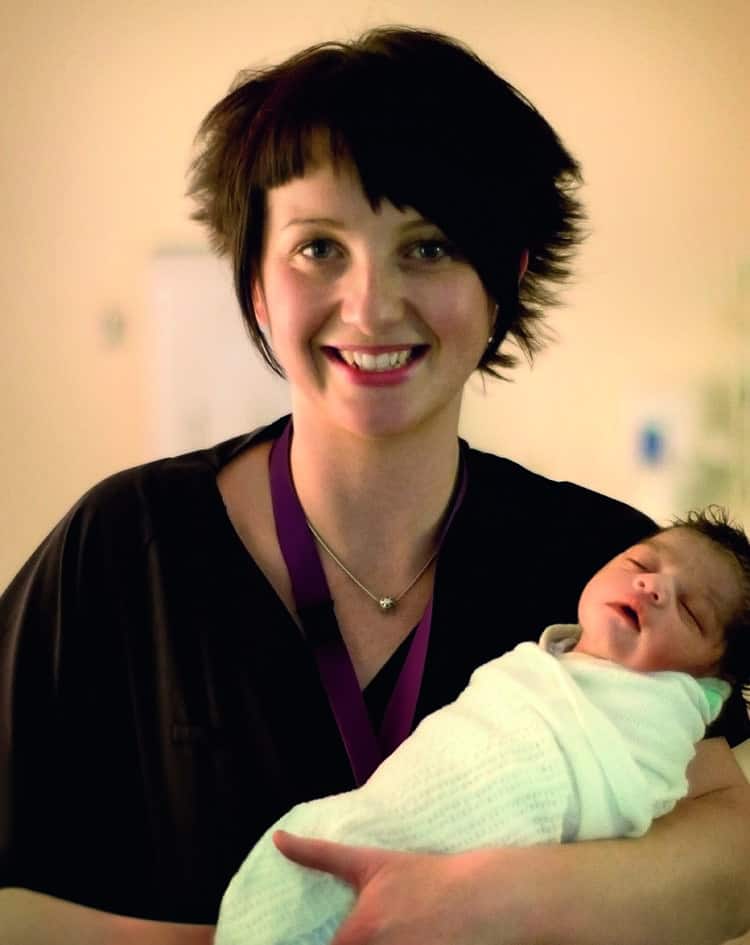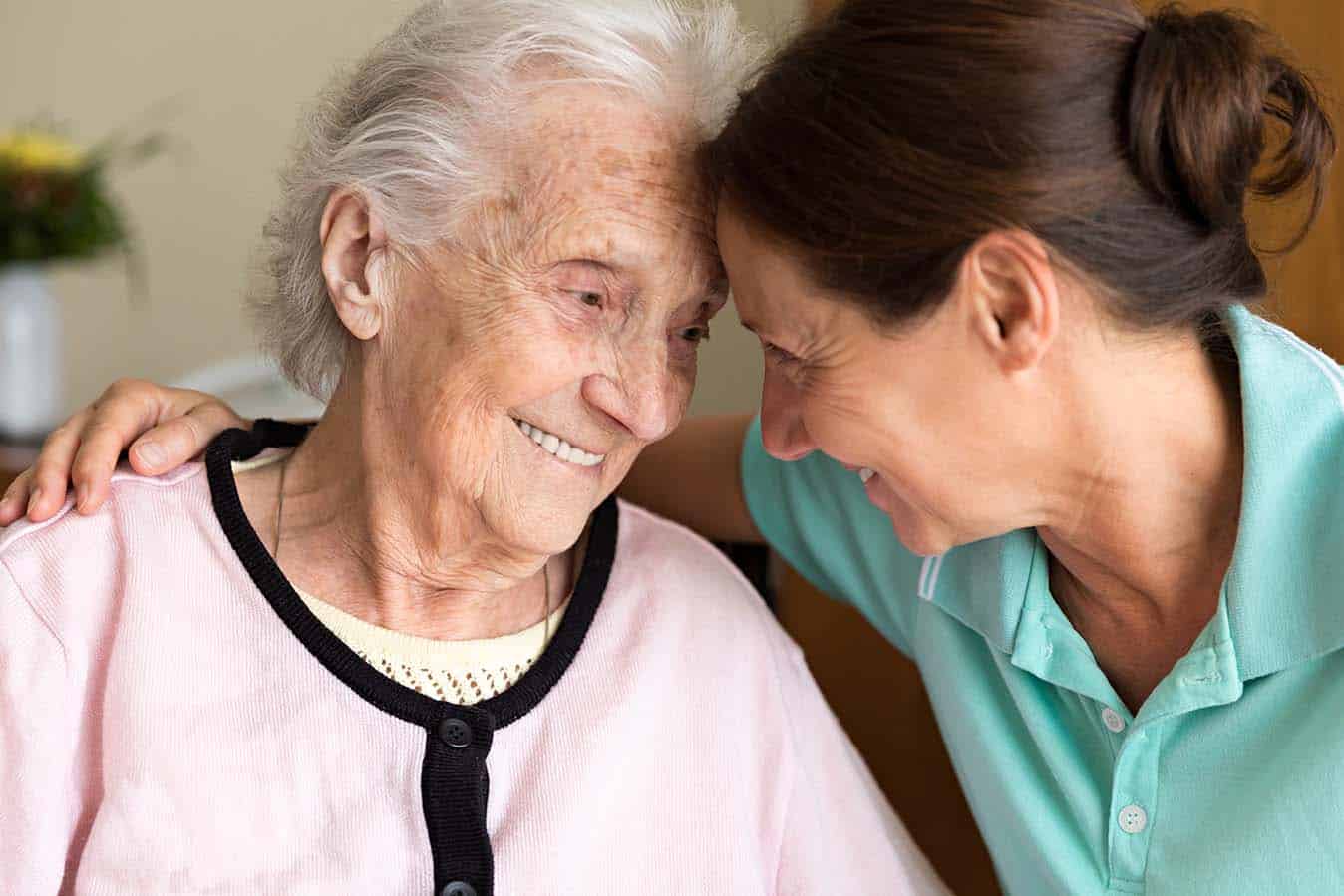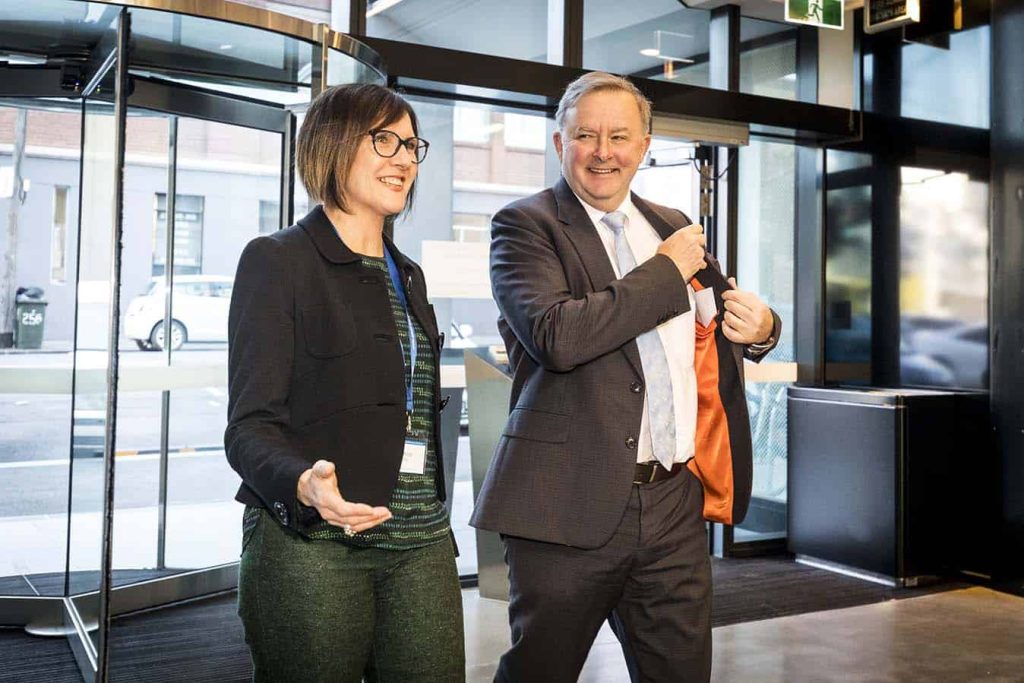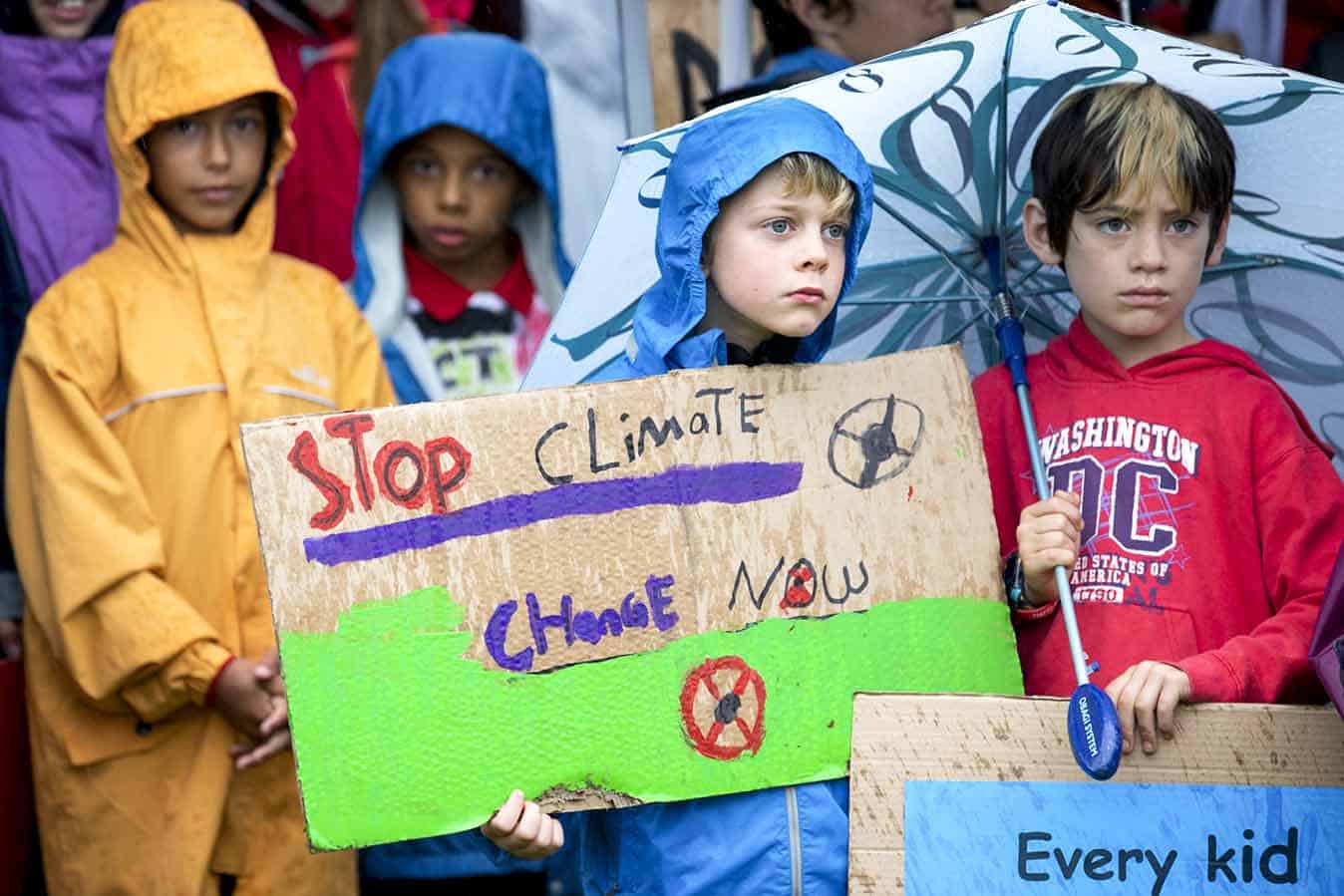For the first time in history, the nations of the world will unite in celebration of the benefits that nursing and midwifery bring to the health of the global population.
The World Health Organization (WHO) designation of 2020 as the International Year of the Nurse and Midwife is aimed to raise the status and profile of nurses and midwives and recognise their work. It’s a time to celebrate, a time to be heard and a time to make it count!
Australia’s contribution to the campaign is focused on access and equity when it comes to health, especially for vulnerable communities.
On the home front in Australia, those in aged care remain amongst our most vulnerable. We have heard of the devastating neglect in aged care in Australia this year with the Royal Commission into Aged Care Quality and Safety. The valiant efforts of a dedicated aged care workforce have held the system together for far too long. These workers can’t sustain their efforts much longer; the sector is in crisis.
The ANMF is calling on the government to take urgent measures to improve the situation in aged care before the Royal Commission hands down its final report later this year. Let us continue to advocate for those in aged care this year – to be loud and ensure our voices are heard.
Workplace health and safety featured heavily at the ANMF Biennial National Conference. No nurse or midwife should feel unsafe at work and the ANMF will continue its work to ensure government policies and procedures and workplace conditions support you at work.
The recent bushfires raging along the East Coast have brought climate change right to the fore. Firefighters have reported they have never seen conditions so early and so severe. We need immediate leadership and action from our federal government on this issue.
2020 promises to be a year on which we can deliver change – for our patients, our communities and ourselves – for a better Australia. Let’s make our year a memorable one!
INTERNATIONAL YEAR OF THE NURSE AND MIDWIFE
Governments from around the world endorsed 2020 as the Year of the Nurse and Midwife at the 72nd World Health Assembly in May 2019 in Geneva, Switzerland because of the vital contribution of nurses and midwives toward achieving universal health coverage.
The year 2020 is significant for WHO in the context of nursing and midwifery strengthening for Universal Health Coverage. WHO is leading the development of the first-ever State of the World’s Nursing report which will be launched in 2020, prior to the 73rd World Health Assembly. The report will describe the nursing workforce in WHO Member States. A State of the World’s Midwifery 2020 report will also be launched around the same time. Nurses and midwives constitute more than 50% of the health workforce in many countries, and also more than 50% of the shortfall in the global health workforce to 2030.
“These two health professions are invaluable to the health of people everywhere. Without nurses and midwives, we will not achieve the sustainable development goals or universal health coverage,” World Health Organization Director General Dr Tedros Adhanom Ghebreyesus said.
“While WHO recognises their crucial role on a daily basis, 2020 will be dedicated to highlighting the enormous sacrifices and contributions of nurses and midwives, and to ensuring that we address the shortage of these vital professions.”

The idea of 2020 as Year of the Nurse and Midwife was initially suggested by the global, three year Nursing Now campaign, which runs until 2020 in collaboration with the International Council of Nurses and WHO. The ICN and the Nursing Now campaign believe that 2020’s designation will reveal the benefits of having a properly trained and resourced nursing workforce in every country in the world.
The ANMF had been actively working together with key national nursing organisations to formulate Australia’s contribution, ANMF Federal Secretary Annie Butler said.
“We want to take this opportunity to get politicians to recognise the value of the Australian nursing and midwifery workforce and invest in us properly. We want to see the expansion of nurse and midwifery-led models of care that are innovative, increase access and lead to better health outcomes for communities. This includes increased use of nurse practitioners in proper jobs.
“Real investment will enable the delivery of nursing and midwifery programs for our most vulnerable populations – people with mental illness, Indigenous Australians, those living in rural and remote areas and the marginalised including the homeless and our prison population.
“Let’s invest in our nursing and midwifery workforce so that we can truly realise equal access and universal health coverage for all Australians.”
While the designation of 2020 as the International Year of the Nurse and Midwife coincides with the 200th birth anniversary of Florence Nightingale, Ms Butler said it was a good opportunity for Australia to reflect on its own nursing and midwifery history.
“We have 50,000 years of cultural healing practices through Australia’s first Nations peoples. We are a nation that is culturally rich, we need to learn from the past as we go forward and build our future.”
AGED CARE
The ANMF will continue to actively participate with the Royal Commission into Aged Care Quality and Safety. The union has called on the federal government not to wait until the conclusion of the Commission in late 2020 to deliver much-needed new funding and reforms.
“Older Australians in aged care, and their families and loved ones, cannot wait another year for government action to fix aged care,” Ms Butler said.
Nurses and aged care workers had been working under the burgeoning strain of an under-resourced and under-staffed sector to provide quality care to residents and families for many years, she said.
“We need to acknowledge the best efforts of our nurses and aged care workers who have not only stayed working in the sector but continued to provide the best care they can for our frail elderly under the most difficult conditions.”
The Royal Commission’s Interim Report had laid out the extent of the problems in aged care and the work that needed to be done, Ms Butler said.
“It provides a recap of alarmingly widespread failures in care across the system, providing detail into some of the causes and starts to provide some direction for government and industry on solutions and outlines three areas where action should start immediately. A focus on extra Home Care Packages for over 100,000 Australians on waiting lists; reducing the use of physical and chemical restraints on nursing home residents and stopping younger people with a disability going into aged care facilities.
“The ANMF agrees those areas need urgent attention and action, but we don’t think the government should stop there – we can’t wait another year for action on other critical areas desperately needing reform.”
The Commission’s Interim Report recognised workforce issues were relevant to every aspect of the Commission’s Inquiry. The government must act on the need to introduce mandated minimum staffing levels and skills mixes, Ms Butler said.

“Mandated minimum staffing levels and skills mixes in residential aged care are not
the only solution required to fix the crisis in aged care but it is the centre piece – many other solutions and improvements required are dependent on proper, safe and quality staffing in order to be effective.”
The ANMF will continue to call for an increase in funding for aged care and increased accountability and transparency around funding.
“We cannot fix the funding issues in aged care if we cannot see where the money is going. The aged care sector will need additional public funding, but there needs to be greater accountability to ensure that funding is spent on quality care.”
The government could immediately start on this by requiring aged care providers to transparently report on their use of publicly-funded subsidies, Ms Butler said.
The government could then determine where additional funding is needed and ensure that it is provided.
The ANMF will also continue its work in investigating financial and tax practices around the largest not-for-profit aged care providers.
“We need to guarantee that taxpayer-funded subsidies received by aged care providers go directly to the provision of care to ensure safe and best practice care for every elderly Australian living in nursing homes,” Ms Butler said.
WORKPLACE HEALTH AND SAFETY
Incidents of occupational violence against nurses, midwives and other health workers in hospitals and healthcare facilities in Australia continue to increase, however the protections for nurses, midwives and other health professionals remain weak.
In 2015, the NSW Bureau of Crime Statistics and Research recorded 361 violent incidents in hospitals. In 2018, that figure had grown to 521. Similarly, the Victorian Crime Statistics Agency recorded 335 assaults on healthcare premises in 2015: this figure increased to 539 in 2018.
“The growing trend of occupational violence against healthcare workers shows no sign of decelerating, with the prevalence of the issue widely reported by the Australian media in 2019,” ANMF ACT Branch member Carol Sandland said at the recent ANMF Biennial National Conference held in Melbourne.
“The psychological and physical impacts of occupational violence are well documented and can result in tragic outcomes.
Nurses and midwives are frontline care providers for the public and have the right to return home from work safely – just like everyone else.”
Federal ANMF has been charged with beginning discussions with the Federal government about the increased exposure that nurses and midwives are experiencing of violence and aggression in their workplace, causing untold physical, psychological and economic harm.
“Action is urgently required to develop an effective integrated approach to the prevention and elimination of violence towards nurses and midwives,” NSWNMA, (ANMF NSW Branch) member Lyn Hopper told fellow delegates at the ANMF’s National Biennial.
This must include:
- Appropriate staffing and skills mix to enable safe care for patients and safety of staff and to ensure that no nurse or midwife works in isolation.
- Improved reporting systems and transparent reporting of violence.
- Proper implementation of policies designed to provide protection from violence.
- Funding pool for anti-violence measures.
“We call on the ANMF to actively campaign against the excessively high levels of occupational violence that are occurring against nurses and midwives across all aspects of health in Australia, with a view to secure adequate and appropriate legislative changes throughout the entire country to keep nurses and midwives safe from occupational violence within their workplaces,” Ms Sandland said.
Sexual harassment of nurses and midwives by patients has also been highlighted as a major issue. In recent research conducted by Dr Jacqui Pich of the University of Technology Sydney, 805 of 3,416 participants reported inappropriate physical or sexual contact in the previous six months.

Photograph by Chris Hopkins
“Sexual harassment is not part of a nurse or midwife’s job description. Every medical facility should have an official policy and procedures addressing sexual harassment and should take all reports seriously,” NSWNMA, member Liz McCall said.
CLIMATE EMERGENCY
The World Health Organization and United Nations scientists warn that without stronger action to curb greenhouse gas emissions, climate change will have dire consequences for the health of humans and the planet.
A global movement which has inspired the next generation of youth have called on governments to act immediately. Students around the world have gone on strike urging world leaders to act. Nurses and midwives have joined the movement fuelled by their own concerns about health for their communities.
“We note with anger that the climate crisis is already affecting millions in Australia and around the world”, ANMF Tasmanian Branch member Monica Werner said at the 2019 ANMF Biennial National Conference. “Science tells us that further global warming must be kept to 1.5 degrees C in order to avoid catastrophic climate change. Average temperatures have already increased by 1 degree C in the past century and the world is on track for a further 3.7 to 5 degrees C increase.
“The world needs to move to zero net carbon emissions by about 2050 and halve carbon emissions each decade. Yet, emissions in Australia and globally continue to increase.”
The 2019 ANMF Biennial National Conference called on the ANMF to support the School Strike for Climate movement and to encourage its members to join in global action to combat climate change.
“We further call on the ANMF and its members to support action and campaign for stoppages across the global union movement,” Ms Werner said.
“We understand the enormous work to be done to lower emissions across a number of sectors. We want this work to be done.
We demand an enormous and immediate government investment in new low emissions systems.”
ANMF Federal Secretary Annie Butler said as frontline health professionals, nurses and midwives and carers were increasingly concerned and angry about health implications of climate change.
“Adverse climatic conditions continue to pose significant risk to the health and wellbeing of the community, particularly in those who are most vulnerable.”
The ANMF called on the government to focus on a “genuine emissions reduction scheme” through the greater use of renewables, Ms Butler said.

“We need to transition to zero emissions energy sources urgently to avoid dangerous and irreversible impact to the environment and health and to advocate for a renewable energy target.”
The ANMF would pressure all levels of government to rapidly expand measures to protect communities from climate change and develop mitigation efforts that include rapidly reducing Australia’s carbon emissions, Ms Butler said.








